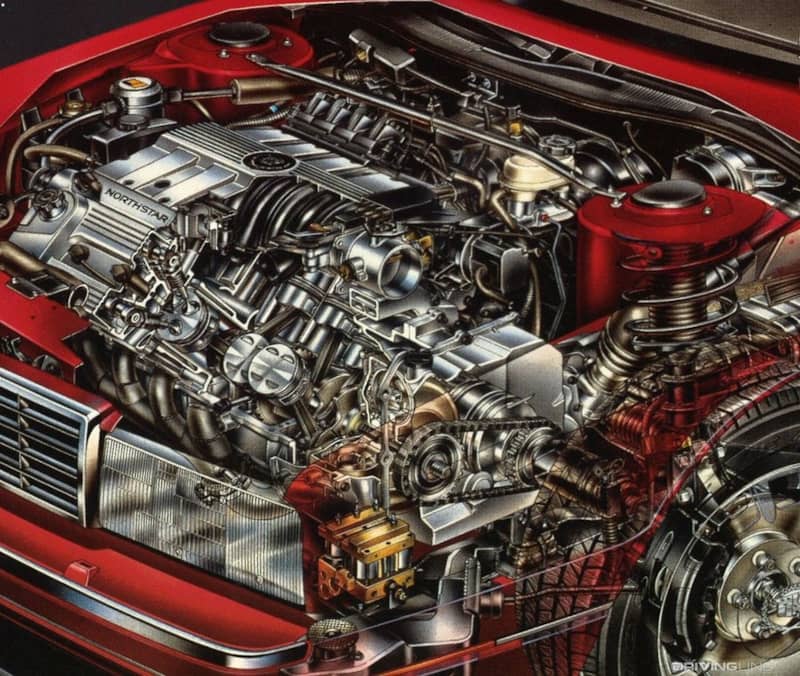3 Hi-Performance Tips For Building The Cadillac Northstar V8, GM's 32-Valve Swap, Sandrail, and Kit Car Champ
Cadillac's Northstar V8 was a revelation when it first appeared in the early '90s. Sporting a 32-valve, dual overhead camshaft design and all-aluminum construction, the Northstar was light years ahead of the eight-cylinder options found in previous Cadillacs. Debuting in the short-lived Allante, the Northstar would be best known for its long stint under the hoods of the DeVille/DTS, Seville (STS) and the Eldorado (ETC), each of which featured a front-wheel drive layout.

Developed in part using technology lifted from Oldsmobile, the engine would also find its way under the hoods of the Pontiac Bonneville and Buick Lucerne. A later rear-wheel drive / all-wheel drive version of the motor was additionally offered in the Cadillac XLR, the next-generation STS, and the SRX SUV. Olds would finally snag its own iteration of the motor for the Aurora that displaced 4.0L instead of the standard 4.6L, as well as a Northstar-derived V6 known as the 'Shortstar.'

The 4.6L motor is reasonably powerful right out of the box, delivering between 275 and 300hp in stock trim for front-wheel drive applications and between 320 (naturally-aspirated) and 469 (supercharged) when found in rear-wheel drive vehicles. Its affordable price point and the fact that it was designed for multiple layouts has made it a popular swap candidate, especially for those seeking a mid-engine V8 that won't require engineering kludges to stuff into a compact space. This is evidenced by its longstanding relationship with the Fiero V8 community (with direct bolt-in kits available from numerous companies) and of course sandrail builders who have long embraced the Northstar's potential.

What if you want more? Is it worth sinking cash into the Northstar to try to squeeze out extra horsepower? The short answer is 'yes,' but you should focus on the areas that will give you the most bang for your buck. Here are three steps you can take to increase your Northstar V8's power and performance.
Valvetrain Upgrades

The 32-valve design of the Northstar's engine head gives it a serious advantage when it comes to upper rpm breathing as compared to a more traditional 16-valve pushrod motor. In fact, the factory lifters are good for 8,500 rpm, but in order to get there safely you're going to have to swap in a set of stronger valve springs.

If you're aiming for on-track performance, this can be a worthwhile route to pursue, as you'll be able to push the Northstar's powerband into the upper reaches of the rev range versus the more modest 6,400 rpm-7,000 rpm redline that comes with the car.
Camshafts

With four cams to work with the Northstar offers more versatility when sculpting a lift profile for the valve train. In fact, it's possible drill the factory timing gears to change the lobe separation angle for better breathing, an inexpensive mod that does require removing the gears from the engine. If you want more aggressive camshafts, there are also options available, and it's possible to add between 75 and 100 horsepower over the stock setup and still remain streetable.

Keep in mind that the Northstar doesn't have as much potential locked up inside of it as the LS does in this department, so a more extreme cam is likely not worth the trade-offs of rough idle and low engine vacuum.
Tuning

In order to take advantage of any of the above, it's necessary to either tune the factory PCM or go to a stand-alone controller for the engine. For starters, the Northstar ECU has a bunch of funky programming in it—for example, turning off traction control will lock out first gear in many applications—that is contrary to what you'd expect from a performance car. Given that most factory Northstar installations are linked to automatic transmissions, you'll want to have just as much control over shift programming as you do engine controls.

More than that is the need to move the rev limiter up past the 8,500 mark, and ensure that fuel delivery, spark, and timing are all matched to the cam profile you've installed in the vehicle. Creating a stand-alone ECU out of the factory Northstar computer is not difficult, but it will require a reflash from a known Cadillac performance shop, or one that is used to dealing with kit cars and sandrails.
More From Driving Line
- The Allante was the first Northstar-equipped vehicle from Cadillac, but it was also a total disaster for the brand. Check out our deep dive feature on what went wrong for the Cadillac Allante.







